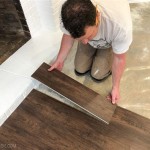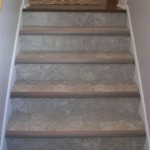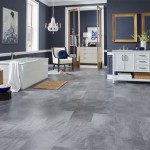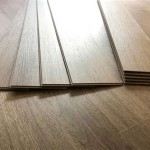Understanding Bamboo Flooring Underlayment: The Essential Guide
Installing bamboo flooring involves meticulous attention to various components, with underlayment playing a crucial role in the overall performance and longevity of your flooring system. Understanding the different types of bamboo flooring underlayment and their specific benefits will help you make informed decisions during the installation process.
Types of Bamboo Flooring Underlayment
Cork Underlayment: Cork underlayment offers excellent sound absorption and insulation properties, making it ideal for reducing noise transmission between floors. It also provides a comfortable and springy feel underfoot, contributing to the overall walking comfort.
Rubber Underlayment: Rubber underlayment is known for its moisture resistance, which is essential in areas prone to moisture or spills. Its dense composition provides a firm and supportive base for bamboo flooring, enhancing its durability.
Polyethylene Underlayment: Polyethylene underlayment is a cost-effective and versatile option that offers a balance of sound absorption and moisture resistance. Its vapor barrier properties help prevent moisture penetration and promote the longevity of the flooring system.
Felt Underlayment: Felt underlayment is commonly used to reduce noise transmission and provide a slightly cushioned feel. It is a more affordable option but may not offer the same level of moisture resistance as other types of underlayment.
Benefits of Using Underlayment
Sound Absorption: Underlayment significantly reduces noise transmission, minimizing the impact of footsteps and other sounds from traveling through the flooring and into adjacent rooms or downstairs.
Moisture Resistance: Moisture resistance is crucial for preventing moisture from reaching the bamboo flooring and causing damage. Underlayment acts as a barrier, protecting the flooring from warping, buckling, or cracking due to moisture exposure.
Insulation Properties: Underlayment provides an additional layer of insulation, helping to regulate temperature and reduce energy consumption. It can keep a room cooler in summer and warmer in winter, improving overall comfort and energy efficiency.
Improved Walking Comfort: Underlayment creates a more comfortable and springy walking surface, reducing joint and muscle fatigue. It can provide a luxurious feel underfoot and enhance the overall walking experience.
Factors to Consider When Choosing Underlayment
Flooring Type: Different types of bamboo flooring may require specific underlayment characteristics. Consider the thickness, durability, and moisture resistance required for your particular bamboo flooring.
Subfloor Condition: The condition of the subfloor can influence the type of underlayment needed. If the subfloor is uneven or has imperfections, a thicker or more dense underlayment may be necessary to provide a smooth and level base for the flooring.
Moisture Considerations: In areas prone to moisture or spills, a moisture-resistant underlayment is essential to protect the bamboo flooring from damage. Consider the humidity levels and potential exposure to moisture in the room.
Acoustic Concerns: If sound absorption is a primary concern, choose an underlayment with high sound absorption properties. This is particularly important in multi-level homes or areas where noise transmission is a concern.
Conclusion
Understanding the different types of bamboo flooring underlayment and their specific benefits will equip you with the knowledge to make informed decisions during the installation process. By selecting the right underlayment for your flooring system, you can enhance sound absorption, moisture resistance, insulation properties, and walking comfort. This will ensure the longevity, performance, and overall enjoyment of your bamboo flooring investment.

What Is A Floating Floor The Bamboo Flooring Company

Bamboo Flooring Installation Methods Explained The Company

Bamboo Flooring Understanding The Pros And Cons Bennetts Carpets

Quick Guide To Underlay For Bamboo Floors The Flooring Company
The Best Underlayment For Every Type Of Flooring

Flooring Underlayment Non Toxic Effective Green Building Supply

Underlayment Buyer S Guide

Bamboo Flooring Constructions Explained The Company

Bamboo Flooring Pros And Cons Colours Types History

Understanding Underlayment Flooring Inc
See Also







